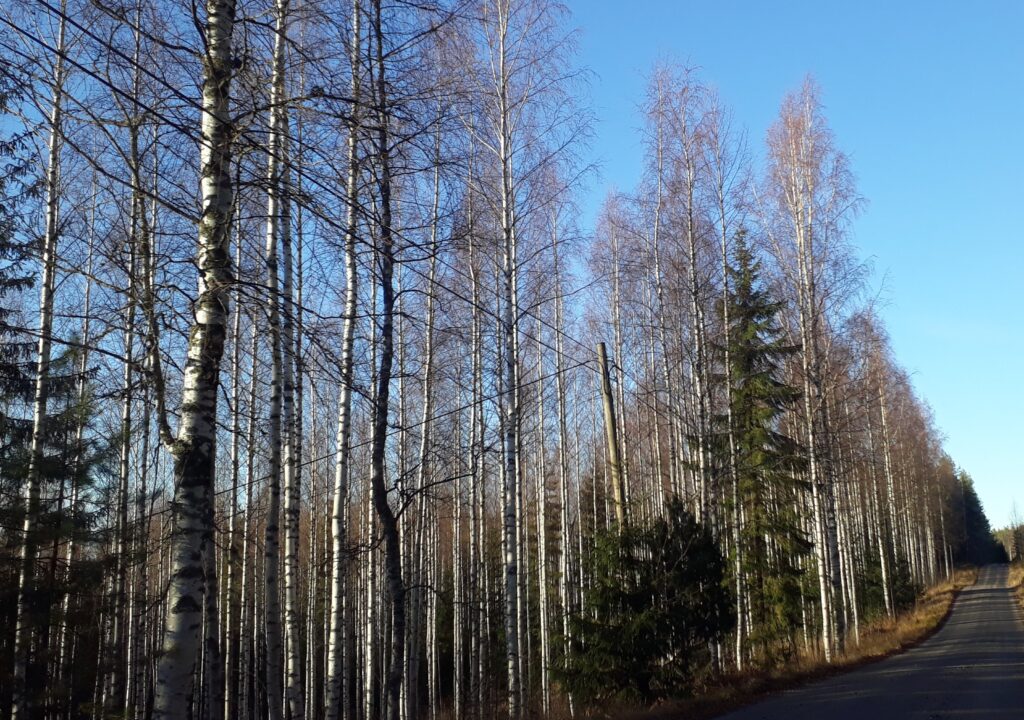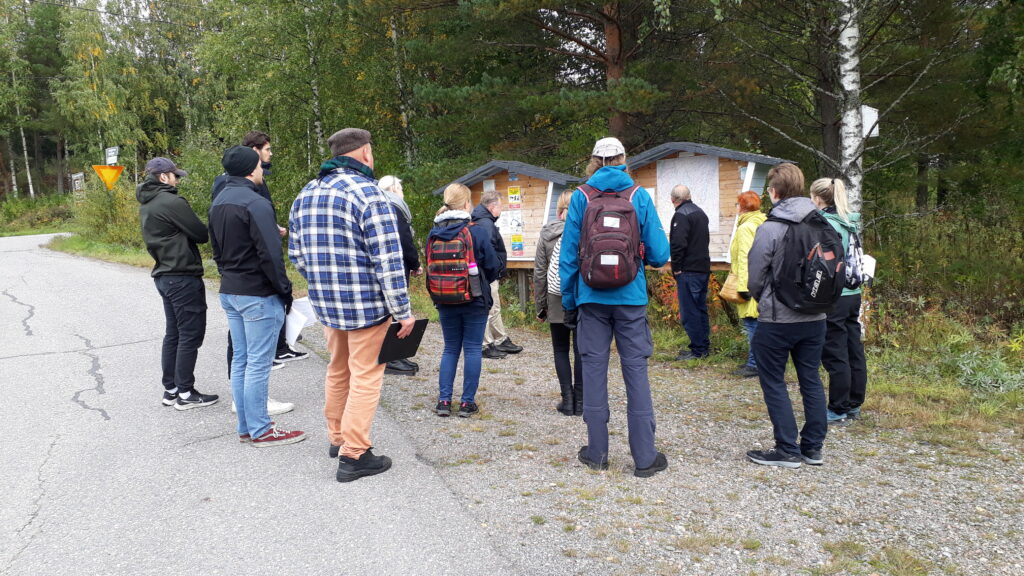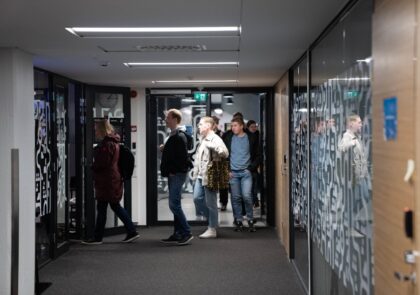
Climate change is happening. The strength of the effects depends on how much and how fast we can decrease the planet’s greenhouse gas emissions. Although we would cut all the emissions into zero right away, changes in climate would still happen. By preparing to the coming changes, we can avoid or reduce damages.
Author: Kaisa Tuominen
Long-term and short-term changes are expected. Long-term chances include general warming, raising sea level and changes in the distribution areas of plants and organisms. Short-term chances include intensifying and changing extreme weather phenomenon. (Tuomenvirta et al 2018.) Globally this means intensifying storms, extreme heats, and dry seasons (Ilmatieteen laitos 2022). These phenomena cause different risks for people, infrastructure, and businesses. The risks can be for example, health hazards caused by the heat, wells drying out, storm damages and spreading of bark beetles to the forests.
Climate-Safety in rural Häme -project aims to increase climate-safety in rural Häme by collecting and spreading information about preparation to extreme weather phenomenon. Target groups include residents, municipalities, forest owners and preparedness professionals. The project focuses on the short-term changes. (LAB University of Applied Sciences 2022.)
The project carried out a climate risk assessment in Urajärvi village in fall 2022. Urajärvi is a small, 400 inhabitant village in Päijät-Häme, Southern Finland. The residents had noticed some climate changes. During few last springs, scumbag damages had been worse than earlier. Some roads were completely cut off as the ground was washed away by the meltwater. In higher places, the well water had dried up in some households one summer, when the residents had fetched water from the village hall. Blue-green algae had not been detected in the area’s lakes. Residents were well prepared for power outages caused by storms.

Image 1: Students in their first visit to Urajärvi Village (Image: Kaisa Tuominen)
The process of climate-risk study
The students from LAB University of Applied Sciences did a study in Urajärvi to find out, what kind of climate risks exists there and how the residents could preventive and/or prepare to them. The study started in village evening, where the residents were introduced to the topic and in interviewed about perceived risks. The students interweaved altogether 20 residents.
After the event, the students analyzed and mapped the results, and planned and executed a field inspection, where potential risk areas were reviewed. After that, the students draw up action proposals to support preparedness. The results were published in another village evening held in November 2022.
Residents are mostly satisfied with housing security
The interviews show, that residents are mostly satisfied to the safety of the residential area. Power failures happen sometimes, but they are short and informed well. The residents are saying they are well-prepared for power failures. The students found out that some power lines run through dense groups of threes. Also, some electricity poles were skewed. The students recommended primarily for the immediate vicinity of power lines felled by trees by the landowner. The area’s electricity distribution companies offer a free advisory service in such cases. The students did not mark overturned electricity poles on the map, and no action proposals were created.
Based on the interviews, the biggest complaints were related to road maintenance, especially in winter. Building and maintaining a road is expensive, and in addition to costs, problems can arise from the attitudes of the landowners. It can be difficult for an outsider to influence these. The action proposals that the students suggested to the residents included better marking of house number in case of an emergency, so that alert vehicles would find their way.
Urajärvi properties represent typical rural buildings: residential buildings, courtyard buildings. Part of the area is part of the water and sewer network, some have their own wells. Based on the information obtained from the interviews, the biggest disadvantages facing the buildings are caused by wind and heat. Buildings close to the forest face a risk of falling trees. Buildings close to hill face a risk of runoff from heavy rains. Buildings in open places can face risks storm damage, for example, detachable roof panels.
Heat was named as a major risk in Urajärvi, related to buildings and housing. Heat can cause health risks especially to little child and elderly people. Heat can also cause the wells drying out. The students propose the resident to take care of cooling systems in the houses, for example air heat pumps. The wells should be regularly checked for water quality. Also, the condition of the trees next to houses and other building should be regularly checked and if needed, hewed down.
Climate safety in rural and urban environments
Differences in the climate safety of people living in the rural or urban environments have not been studied much. Risks might be different in urban and rural environments. For example, in rural environments electrical networks might be off for longer than in the cities due to greater number or overhead lines. On the other hand, people living in rural environments might be better prepared to power failures. As the winters get milder, in rural areas, due to the lack of snow in winters, the greyness, darkness and slush of autumn last even longer. This can mean changes in the way people move, community and their physical and mental health. (Maa- ja metsätalousministeriö 2011).
References
Ilmatieteen laitos. 2022. Ilmastonmuutos. Cited 19 Dec 2022. Available at https://www.ilmatieteenlaitos.fi/ilmastonmuutoskysymyksia#6
LAB University of Applied Sciences. 2022. Ilmastoturvallisuuden parantaminen Hämeen maaseudulla. Cited 20 Dec 2022. Available at https://lab.fi/en/project/ilmastoturvallisuuden-parantaminen-hameen-maaseudulla
Maa- ja metsätalousministeriö. 2011. Miten väistämättömään ilmastonmuutokseen voidaan varautua? Yhteenveto suomalaisesta sopeutumistutkimuksesta eri toimialoilla. Cited 20 Dec 2022. Available at http://urn.fi/URN:ISBN:978-952-453-682-0
Tuomenvirta H., Haavisto R., Hildén M., Lanki T., Luhtala S., Meriläinen P., Mäkinen K., Parjanne A., Peltonen-Sainio P., Pilli-Sihvola K., Pöyry J., Sorvali J., Veijalainen N. 2018. Sää- ja ilmastoriskit Suomessa – Kansallinen arvio. Cited 19 Dec 2022. Available at http://urn.fi/URN:ISBN:978-952-287-601-0
Author
Kaisa Tuominen works as an RDI-specialist and Project manager in Climate-Safety in rural Häme -project.
Illustration: Kaisa Tuominen
Published 31.1.2023
Reference to this article
Tuominen, K. 2023. Climate risk assessment in Urajärvi village for better preparedness. LAB Pro. Cited and date of citation. Available at https://www.labopen.fi/lab-pro/climate-risk-assessment-in-urajarvi-village-for-better-preparedness/






